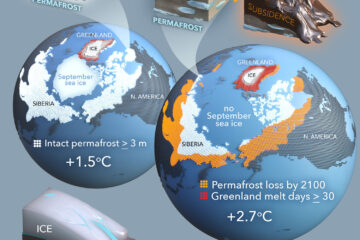Fire, hurricane and carbon dioxide: effects on net primary production of a subtropical woodland
- Disturbance affects most terrestrial ecosystems and has the potential to shape their responses to chronic environmental change.
- Scrub-oak vegetation regenerating from fire disturbance in subtropical Florida was exposed to experimentally elevated carbon dioxide (CO2) concentration (+350 μl l−1) using open-top chambers for 11 yr, punctuated by hurricane disturbance in year 8. Here, we report the effects of elevated CO2 on aboveground and belowground net primary productivity (NPP) and nitrogen (N) cycling during this experiment.
- The stimulation of NPP and N uptake by elevated CO2 peaked within 2 yr after disturbance by fire and hurricane, when soil nutrient availability was high. The stimulation subsequently declined and disappeared, coincident with low soil nutrient availability and with a CO2-induced reduction in the N concentration of oak stems.
- These findings show that strong growth responses to elevated CO2 can be transient, are consistent with a progressively limited response to elevated CO2 interrupted by disturbance, and illustrate the importance of biogeochemical responses to extreme events in modulating ecosystem responses to global environmental change.


